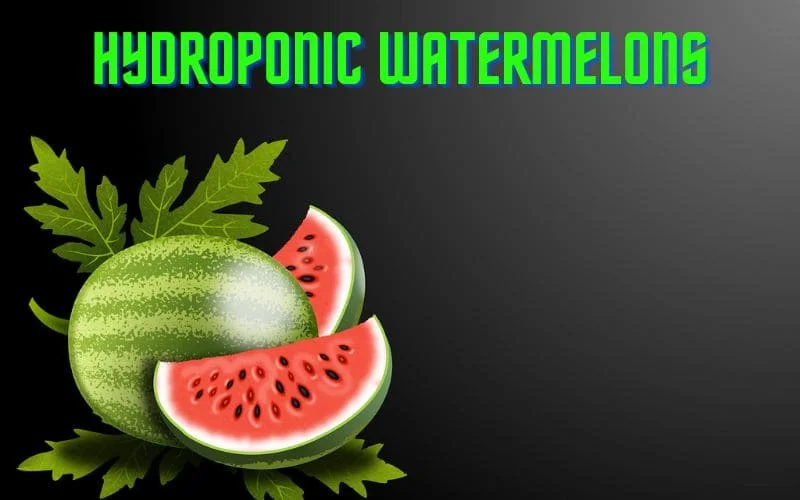3 Key Methods for Successful Hydroponic Watermelons Anytime!

Introduction
- Benefits of hydroponic watermelon cultivation
- Challenges and considerations
Hydroponic watermelon cultivation offers numerous benefits, including increased control over plant nutrition and environment, leading to improved yield and quality. However, this method comes with its own set of challenges and considerations. In this article, we will delve into the key aspects of hydroponic watermelon cultivation and offer practical insights on selecting the right watermelon varieties, determining nutrient solutions, and managing water and temperature in hydroponic systems.
Selecting the Right Watermelon Varieties for Hydroponic Growth
Overview
When venturing into hydroponic watermelon farming, the choice of watermelon varieties is crucial. Look for compact and disease-resistant varieties that are well-suited for soilless cultivation. Here are some of the more well know varieties of watermelon along with the attributes that set them apart. This list is by no means complete. Growers should feel free to search beyond the varieties we have provided and find their perfect melon that suits their growing setup the best.
- Sugar Baby:
- Small in size, perfect for personal consumption or small families.
- Deep red flesh with high sweetness.
- Compact vines, suitable for smaller gardens or containers.
- Crimson Sweet:
- Large, oval-shaped fruits with dark green stripes.
- Sweet, juicy flesh with a high sugar content.
- Disease-resistant and adaptable to various growing conditions.
- Charleston Gray:
- Large, oblong fruits with light green rind and sweet pink flesh.
- Known for its excellent storage qualities.
- Typically grown in warmer climates due to its heat tolerance.
- Yellow Doll:
- Small to medium-sized fruits with bright yellow rind and sweet, crisp flesh.
- Early maturing variety, ready for harvest in about 70-75 days.
- Refreshing flavor with a hint of honey.
- Moon and Stars:
- Unique appearance with dark green rind speckled with yellow “stars” and a larger “moon” spot.
- Sweet, juicy flesh with a hint of spiciness.
- Heirloom variety cherished for its flavor and visual appeal.
Hydroponic Nutrient Solutions for Watermelons
Overview
Hydroponic watermelon plants thrive on a carefully balanced nutrient solution to support their growth. Essential macronutrients such as nitrogen, phosphorus, and potassium, along with micronutrients, must be provided in the correct proportions. By maintaining optimal nutrient levels and pH, you can ensure that your hydroponic watermelons receive the nourishment they need to flourish and yield bountiful fruits.
Managing Water and Temperature in Hydroponic Watermelon Systems
Overview
In a hydroponic watermelon system, a precise balance of water and temperature is essential for successful cultivation. Maintaining adequate moisture levels while preventing waterlogging is crucial to prevent root rot and promote healthy plant growth. Additionally, controlling the temperature within the hydroponic environment is vital to mimic the ideal conditions for watermelon plants, ensuring optimal growth and fruit development.
Hydroponic watermelon cultivation requires a sophisticated understanding of the interaction between water and temperature. The delicate balance of these factors directly impacts the success of the cultivation process. When managing water levels, it is important to consider both hydration and aeration, as excessive moisture can lead to detrimental waterlogging which in turn contributes to root rot. By implementing advanced water management techniques such as drip irrigation and monitoring systems, growers can maintain the ideal moisture levels for robust and healthy watermelon plants.
Furthermore, temperature regulation is a critical aspect of hydroponic watermelon cultivation. Mimicking the natural environmental conditions that promote optimal growth and fruit development is paramount. By utilizing advanced climate control systems, such as automated temperature monitoring and regulation, growers can create an environment that closely mirrors the ideal growing conditions for watermelon plants. This entails maintaining precise temperature ranges to support the metabolic processes of the plants and encourage the development of high-quality fruit.
Conclusion
As we conclude our exploration of hydroponic watermelon cultivation, it’s evident that this innovative approach offers a promising future for fruit farming. By carefully selecting suitable watermelon varieties, providing essential nutrients, and managing water and temperature effectively, hydroponic enthusiasts can enjoy the satisfaction of growing bountiful watermelons in a sustainable and space-efficient manner. Are you ready to embark on your hydroponic watermelon farming journey and witness the abundant harvest that awaits?
